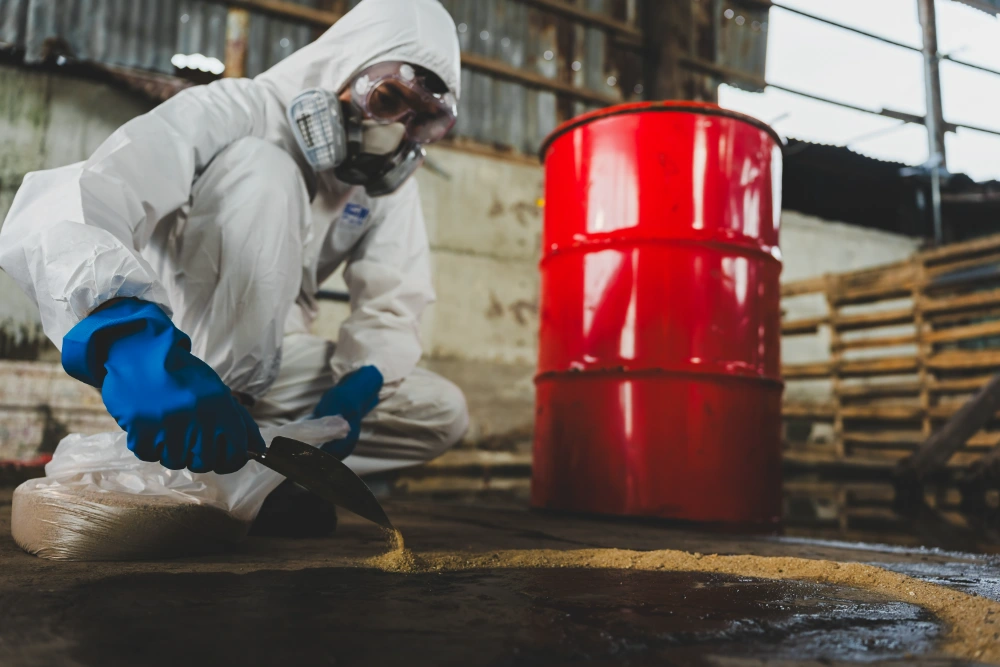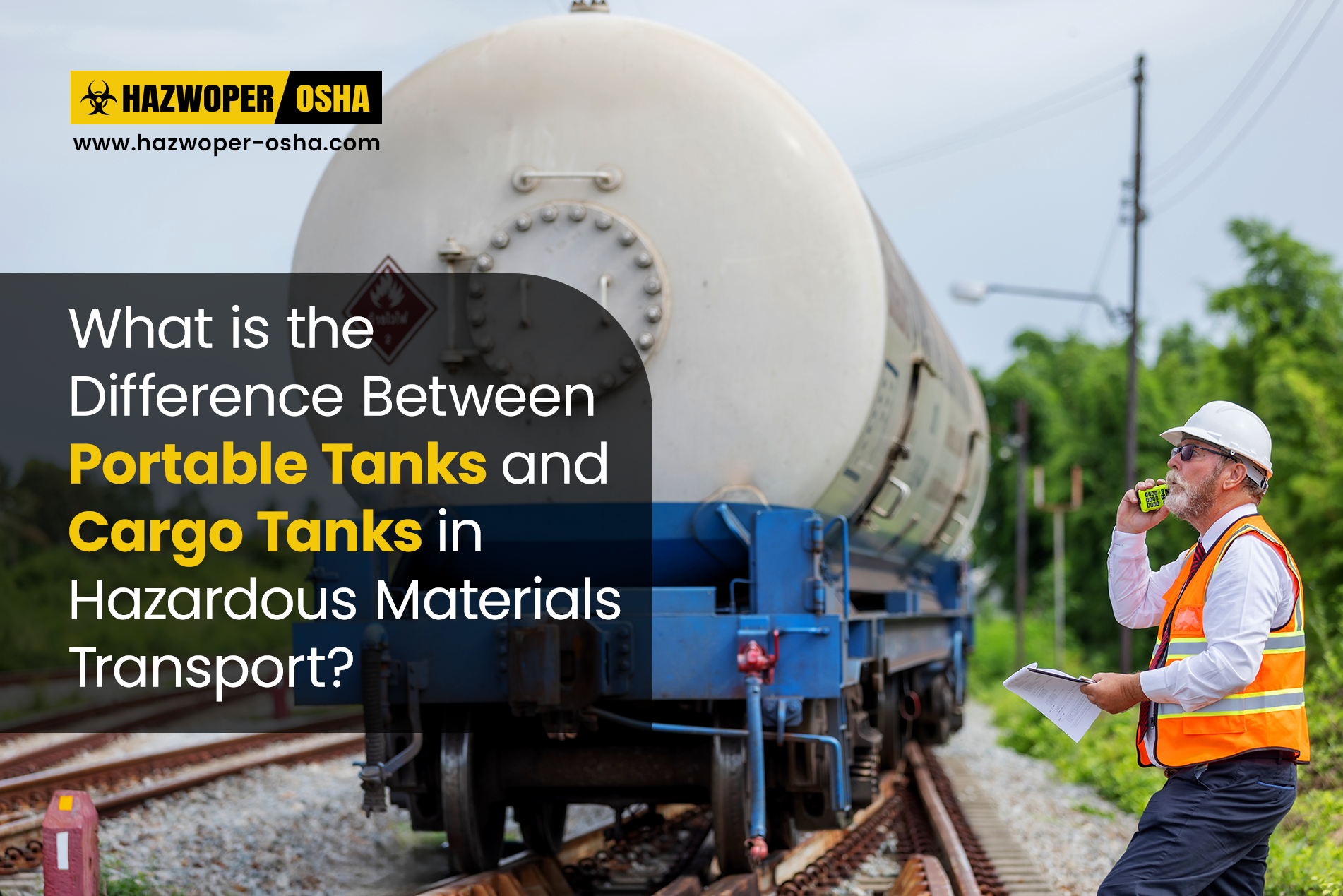Why Is Decontamination Still Overlooked in Protecting Worker Health and Safety?

What is Decontamination?
The removal or neutralization process of contaminants that have amassed on personal protective equipment (PPC), chemical protective clothing (CPC), and other tools and equipment used in hazardous waste sites or when working with hazardous substances is defined as decontamination.
Why is Decontamination Important?
Decontamination is commonly used to protect workers from the permeation of various hazardous materials and chemicals through protective clothing and respiratory equipment to their bodies. When workers undergo a decontamination process, it minimizes the transfer of contaminants into clean areas, non-contaminated surfaces, and people who have not been otherwise exposed to these harmful substances. The unrestrained transmission of poisonous and harmful materials to the community and the environment is also prevented when decontamination takes place. Decontamination also prevents the accidental mixing of incompatible chemicals further safeguarding the health of workers.
Who is Eligible to Undergo the Decontamination Process?
Any worker who is exposed to, or works with, hazardous materials and chemicals must undergo a decontamination process when they leave the contamination zone.
What is a Decontamination Plan?
The employer must have in place a Decontamination Plan before work begins at a hazardous worksite. This Decontamination Plan details all the elements as recommended by the Occupational Safety and Health Administration (OSHA) to safeguard the health and safety of workers working at hazardous worksites. The Decontamination Plan will help employers to identify the hazards at the worksite, evaluate methods to prevent worker exposure to hazards, formalize procedures to prevent contamination of clean areas, understand the number and positioning of decontamination stations that will be required, and determine the best way to dispose of contaminated PPE and other equipment, among other aspects.
Thus, the Decontamination Plan helps employers to design and execute a decontamination facility that will adequately address the needs of the decontamination process by considering the types of contamination, the factors affecting permeation of contaminants in PPE and respirators, as well as ensuring adequate and proper supplies for decontamination are always available.
As with all occupational-related safety and health aspects, the Occupational Safety and Health Administration (OSHA) regulates the process of decontamination on a worksite under the HAZWOPER regulation in 29 CFR 1910.120.
Remember, the Decontamination Plan must be reviewed and revised periodically as well as when there are changes to hazards at the worksite, PPE, or equipment used to change, or when new information becomes available.
What are the Types of Decontamination Methods?
Effectively there are two main types of decontamination methods, the third is the combination of both. These are:
- Physical decontamination
- Chemical decontamination
- Physical and chemical decontamination
Physical Decontamination
When decontamination takes place using methods such as scraping, brushing, rinsing, wiping, or any other means of displacement, this is referred to as the physical decontamination process. This type of decontamination method is normally the first to be used and is often done using water or heat. It is commonly used when hazardous substances in the form of dust or vapor are loosely stuck to and when glues, resins, and cement have adhered to PPE, tools, or equipment. As physical decontamination also includes ‘evaporation’, volatile liquids such as gasoline and ethanol can also be removed using this method of decontamination.
Chemical Decontamination
Chemical decontamination involves neutralizing a contaminant using a compatible chemical solution. This involves dissolving, solidifying, rinsing, sterilizing, or disinfecting the contaminant from the contaminated surface, equipment, tool, or protective clothing to which it is attached. Solvents, surfactants such as household detergents and soaps, and other chemical cleaning and disinfecting solutions are used in the chemical decontamination process. The chemical decontamination process is hence often a wash/rinse process.
Combined Decontamination Process
There are instances when physical decontamination is inadequate, in this case, chemical decontamination must be done as well to ensure the complete removal of all contaminants from a worker’s PPE, and other equipment used at the hazardous worksite.
When Decontamination Goes Wrong: Real-World Consequences
In July 2024, OSHA cited Quala Services LLC, a tank-cleaning contractor based in La Porte, Texas, following the death of a 53-year-old worker. The worker became unresponsive after entering a tank that hadn't undergone necessary atmospheric testing. OSHA determined that the company failed to conduct required atmospheric testing before permitting entry, a critical lapse in safety protocol. This incident underscores the vital importance of adhering to comprehensive decontamination and safety procedures to protect workers from hazardous environments.
Common Decontamination Procedure Errors
- Inadequate use of water for rinsing, resulting in the failure to clear contaminants
- Utilization of incorrect decontamination solution that does not neutralize or react with the hazardous material safely
- Omitting pre-entry checks for PPE, resulting in reduced protection during decontamination
- Failure to establish a clear contamination control boundary, resulting in cross-contamination between dirty and clean zones. Exposing workers to toxic materials due to absence of PPE during the decontamination process.
- Insufficient training of decontamination staff, resulting in unsafe procedures and poor technique.
- Improper disposal of contaminated PPE or materials, with environmental and health implications.
- Failing to decontaminate equipment and reusable items, which can transfer contaminants after cleanup
- Omitting post-decon health surveillance, delaying symptom identification related to exposure
- Rarely reviewing and revising the Decontamination Plan, resulting in ineffective or outdated protocols
Where Can You Learn More About Decontamination?
This article gives an overview for employers and employees to understand the importance of decontamination in safeguarding the health of workers in an occupational setting, especially in hazardous worksites. To learn more and gain an in-depth understanding, enroll today in our OSHA 40-Hour HAZWOPER Training course. If you are already certified, then you can refresh your training with our OSHA 8-Hour HAZWOPER Refresher Training course. All our courses are updated regularly and use modern teaching methods to make training effective.

 EN |
EN |  ES
ES

































































































































